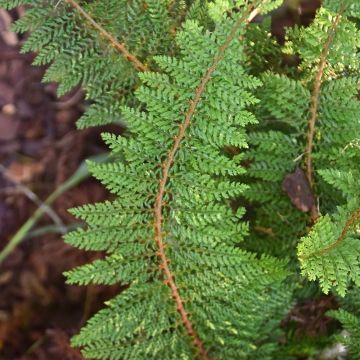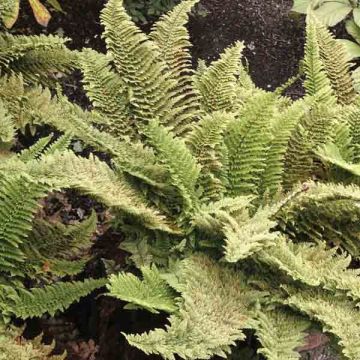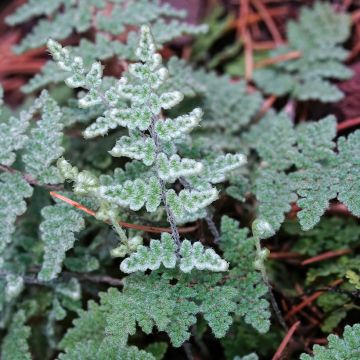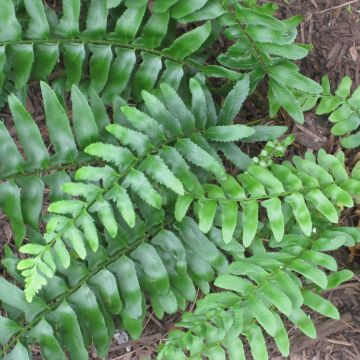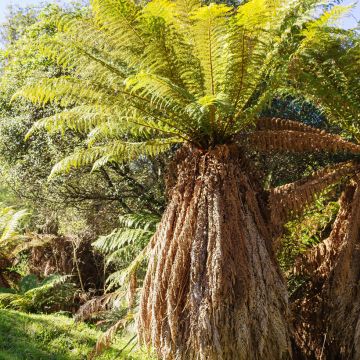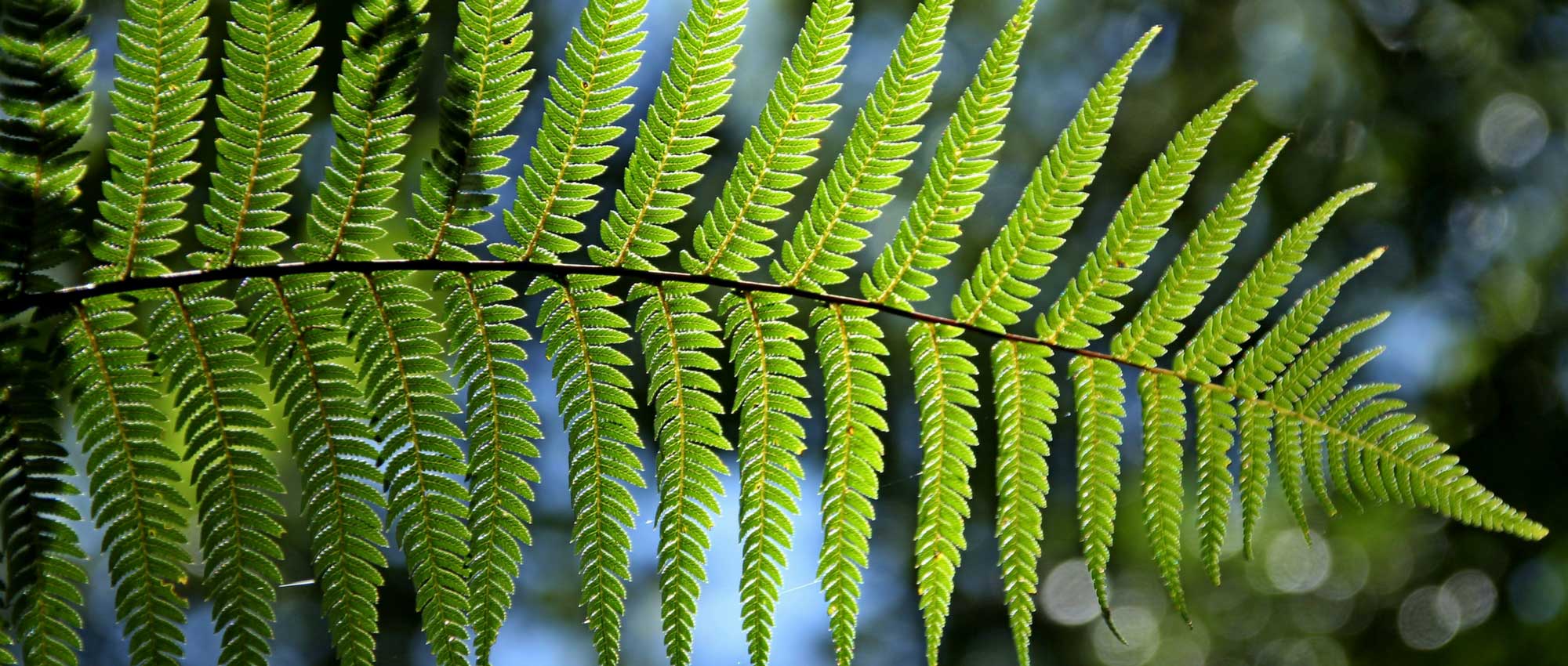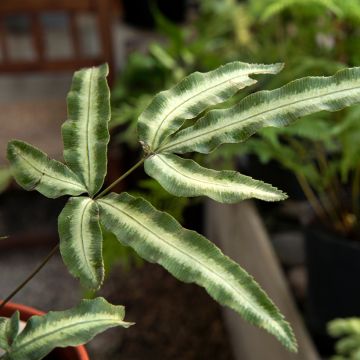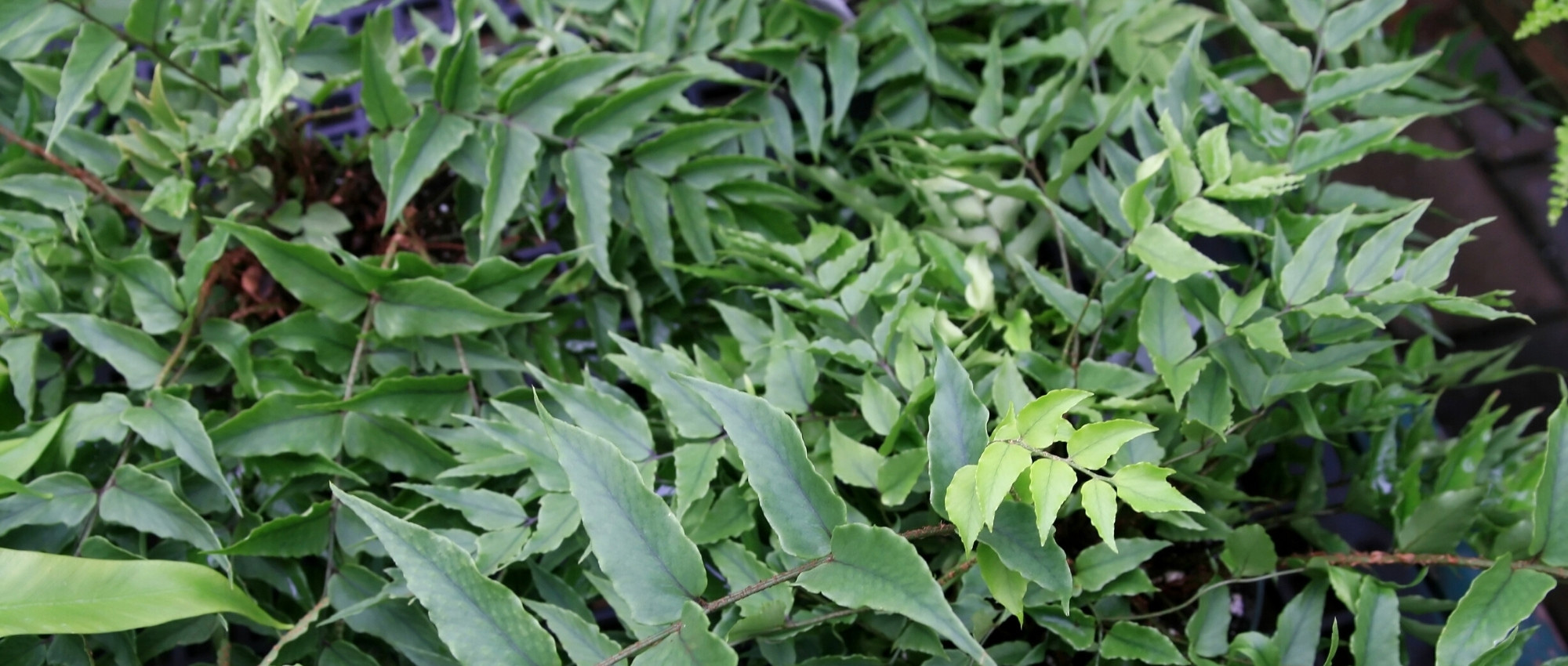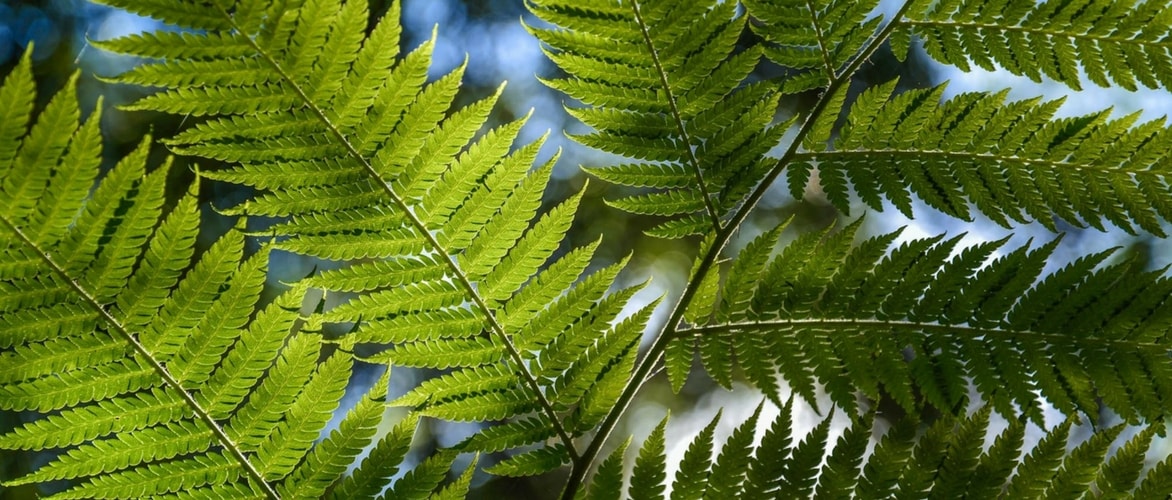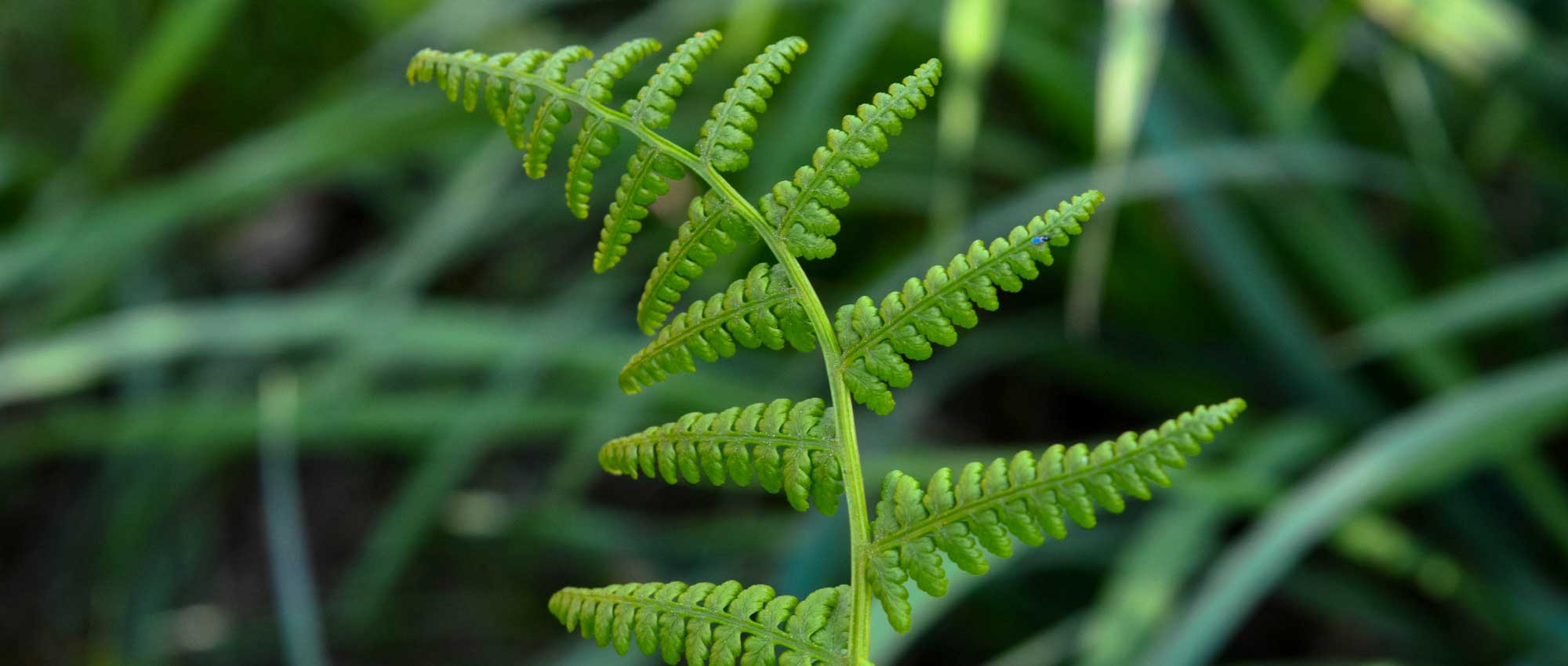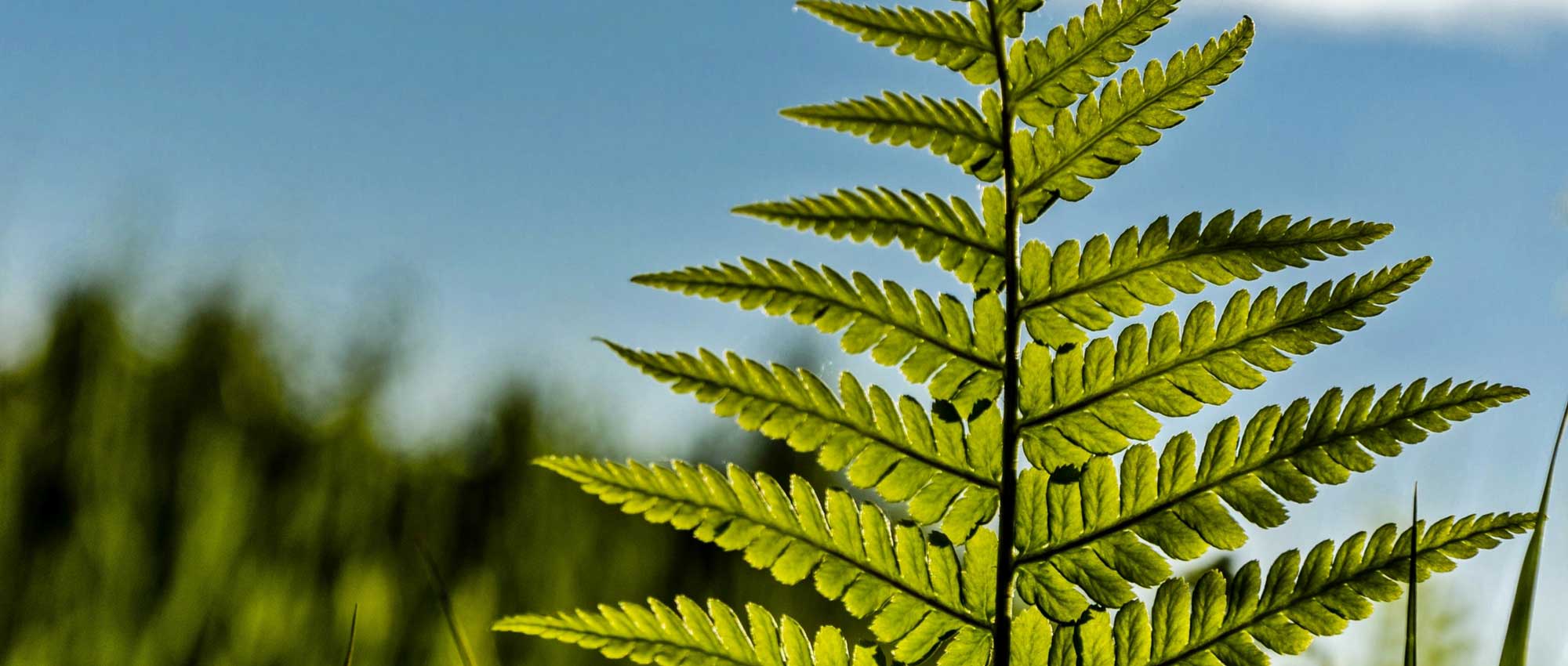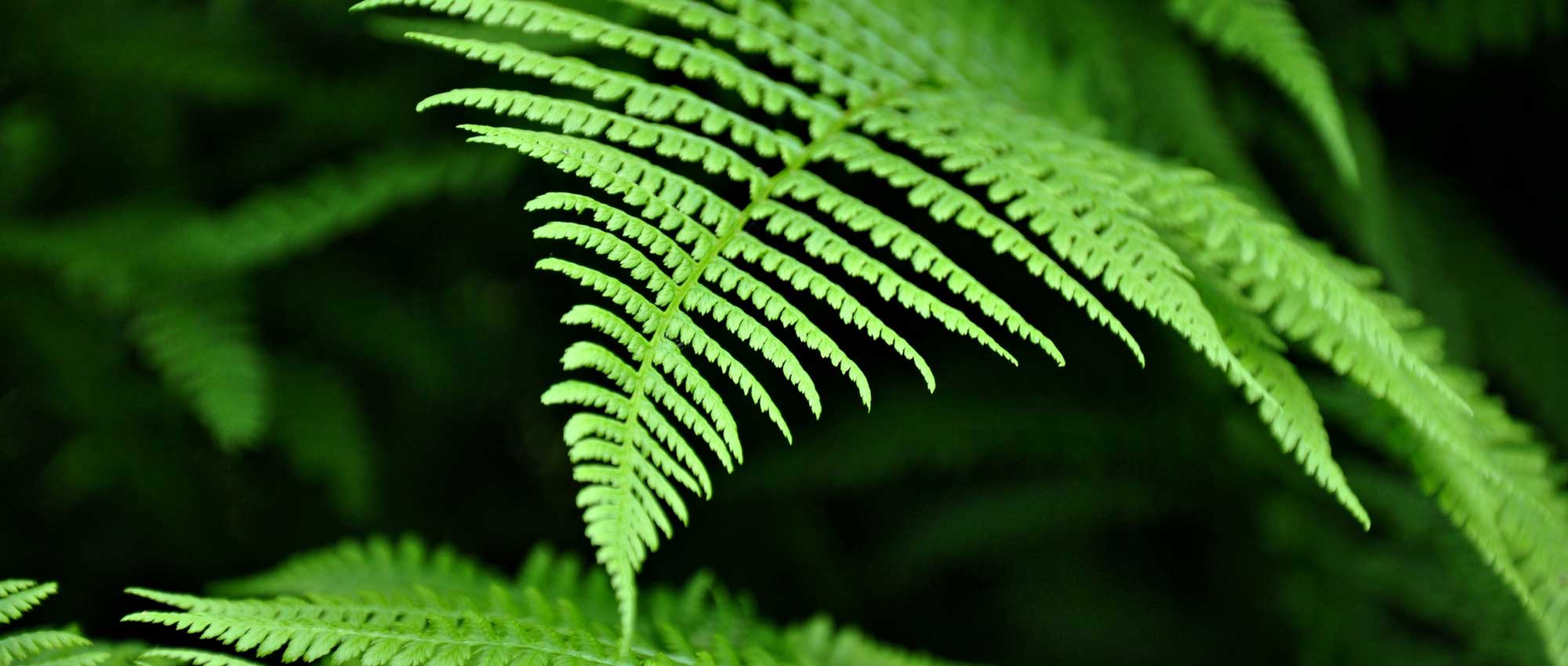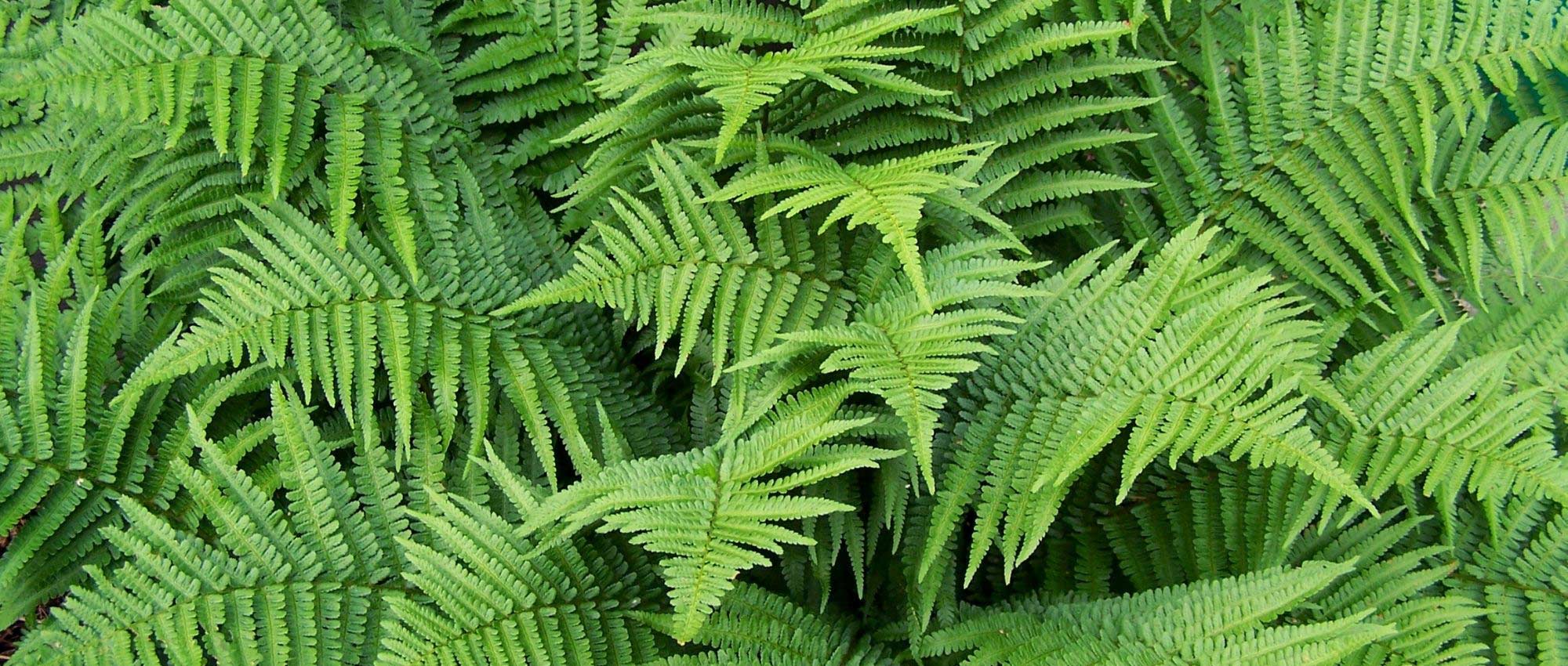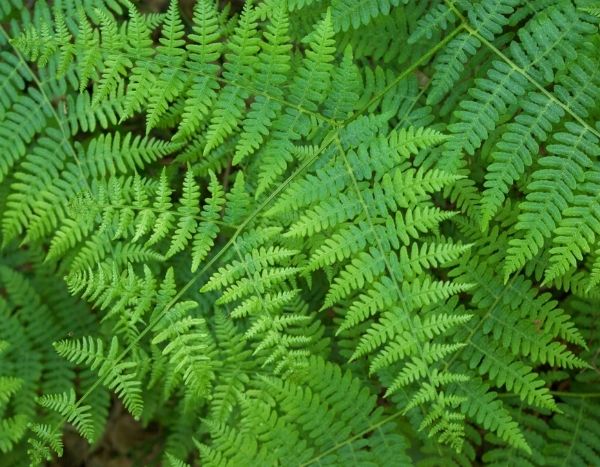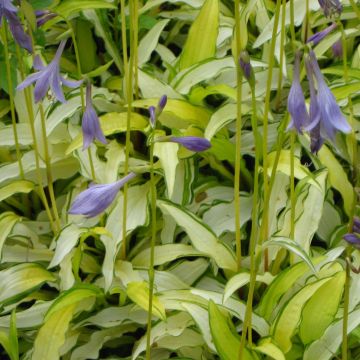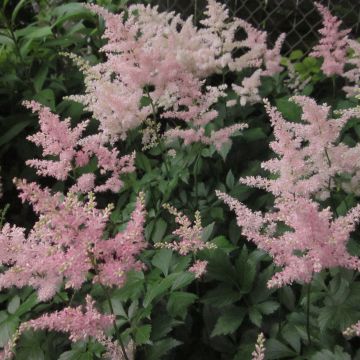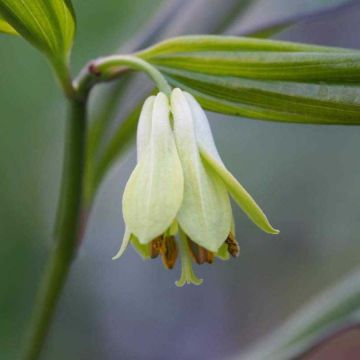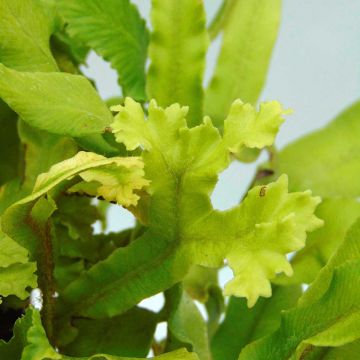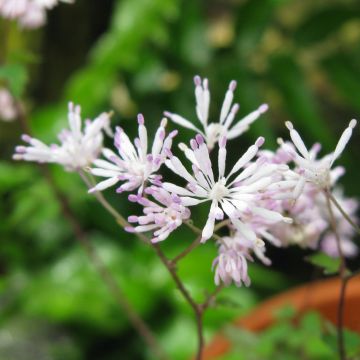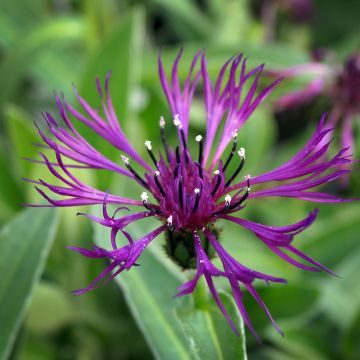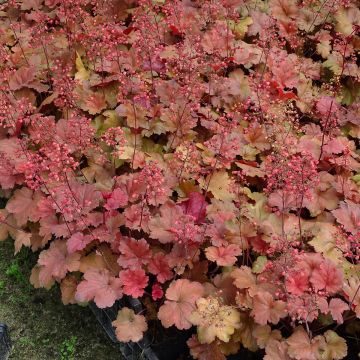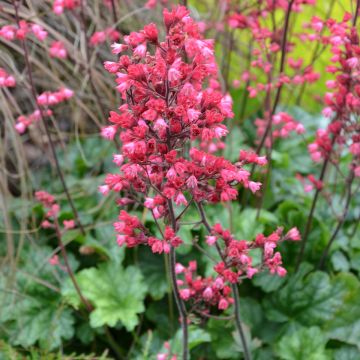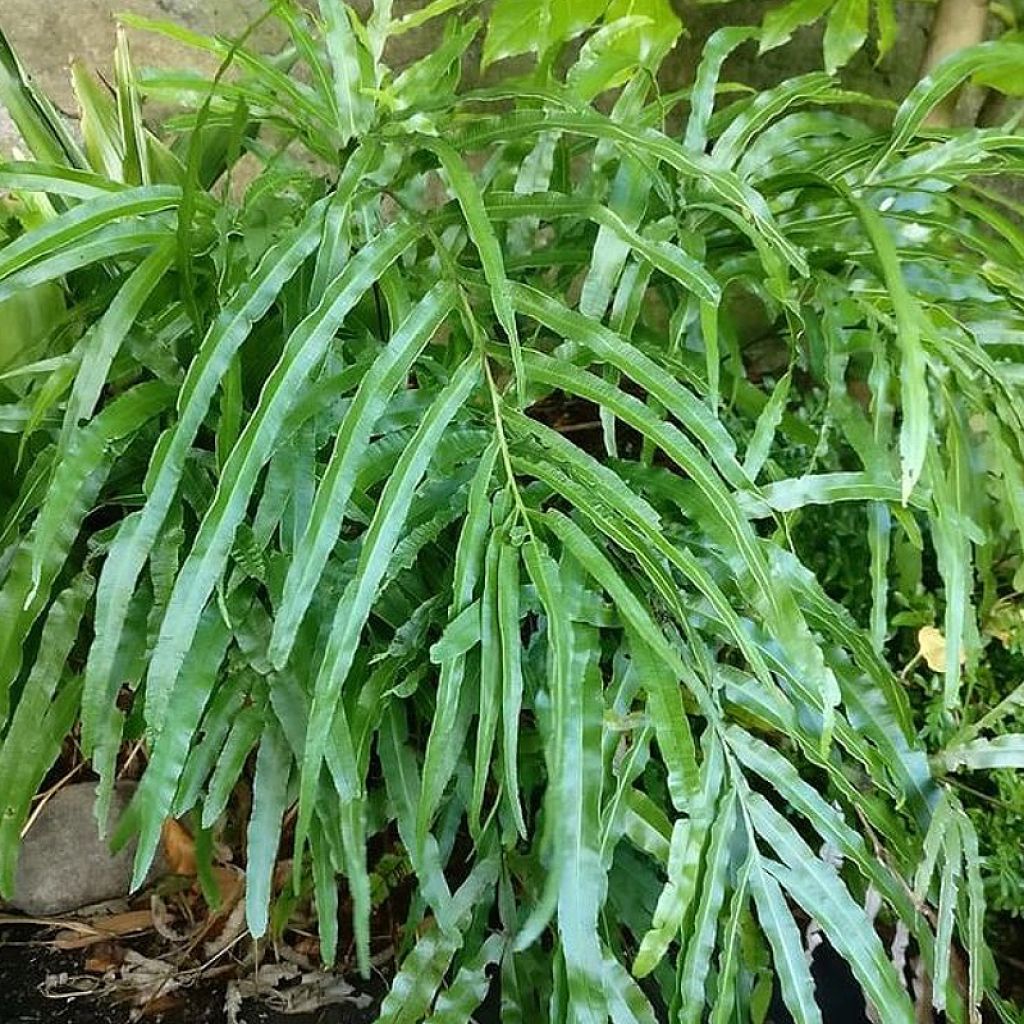

Pteris umbrosa
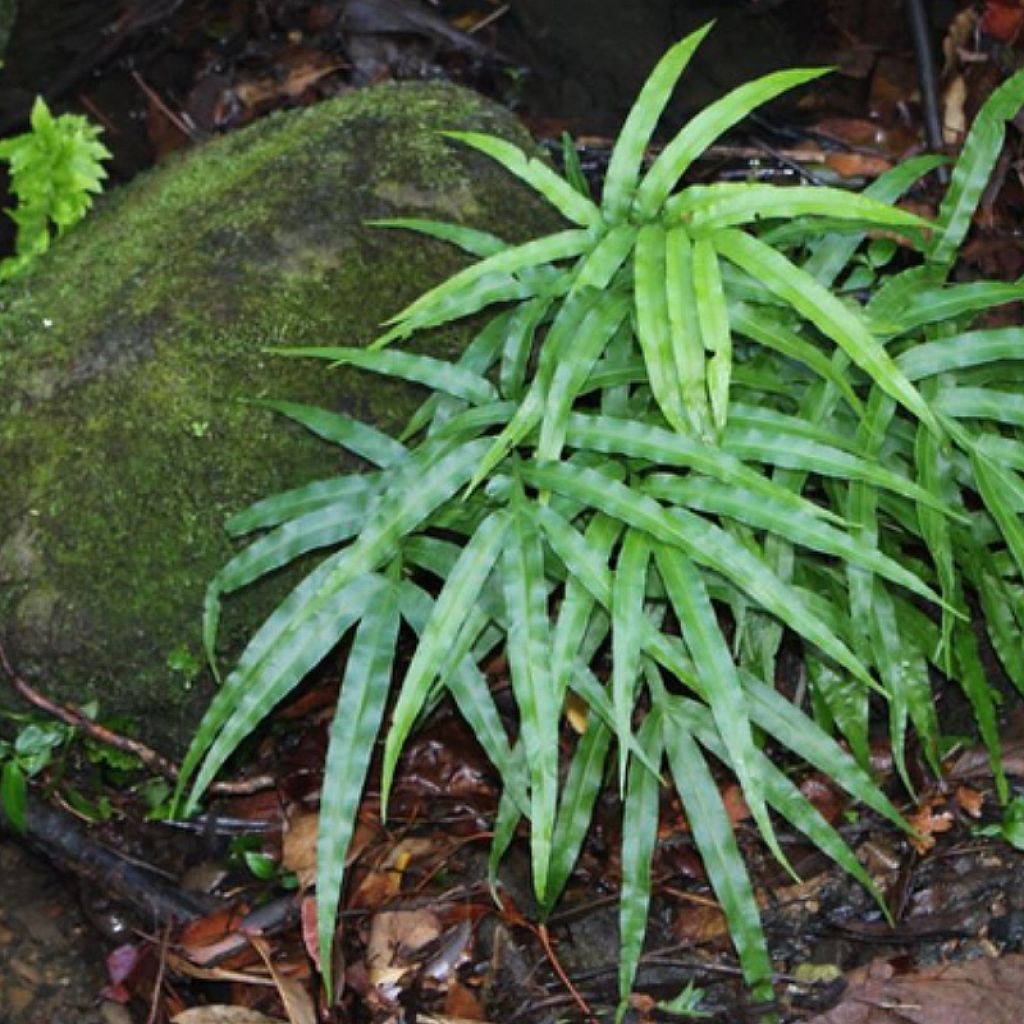

Pteris umbrosa
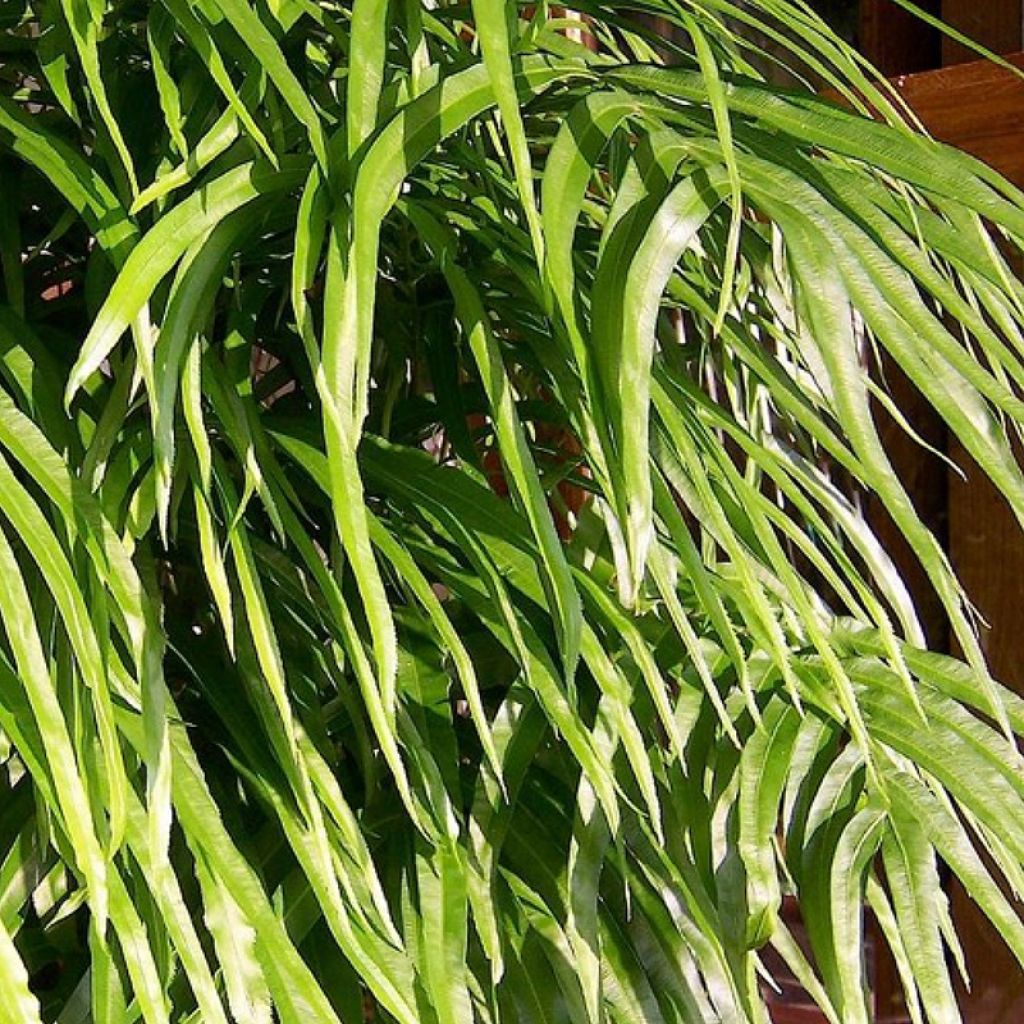

Pteris umbrosa
Pteris umbrosa - Jungle Brake
Pteris umbrosa
Jungle Brake
Special offer!
Receive a €20 voucher for any order over €90 (excluding delivery costs, credit notes, and plastic-free options)!
1- Add your favorite plants to your cart.
2- Once you have reached €90, confirm your order (you can even choose the delivery date!).
3- As soon as your order is shipped, you will receive an email containing your voucher code, valid for 3 months (90 days).
Your voucher is unique and can only be used once, for any order with a minimum value of €20, excluding delivery costs.
Can be combined with other current offers, non-divisible and non-refundable.
Why not try an alternative variety in stock?
View all →This plant carries a 12 months recovery warranty
More information
We guarantee the quality of our plants for a full growing cycle, and will replace at our expense any plant that fails to recover under normal climatic and planting conditions.
Does this plant fit my garden?
Set up your Plantfit profile →
Description
The Pteris umbrosa is a non-hardy tropical fern, appreciated as an indoor plant for its highly green foliage, composed of long erect leaflets. It is a medium-sized fern, resembling a dwarf bamboo, quite easy to grow in environments that are not too dry. It should be grown in a sandy, non-calcareous and moist but not waterlogged soil. It can be grown outdoors in very mild climates. It is also used by decorators in sheltered green walls.
The Pteris umbrosa belongs to the family Pteridaceae, which includes 1150 species native to tropical or arid regions. This semi-hardy botanical species is native to southeastern Australia (New South Wales). It cannot tolerate temperatures below -6°C and is sensitive to dry atmospheres. It is a perennial fern with short creeping rhizomes, forming a beautiful clump with a rather upright and dense habit, reaching a height of about 50-60 cm and a spread of 40-50 cm (16-20in). It grows quite rapidly under favorable conditions. Its fronds are semi-arched, bearing clusters of elongated and linear leaflets, resembling ribbons, slightly undulate, with finely toothed edges, glossy, and a very bright green colour. The foliage persists throughout the year. When it is happy, this fern gradually forms beautiful colonies.
The Pteris ferns are very elegant ferns with great ornamental value, but they are not well-suited for outdoor cultivation in most European climates. The Pteris umbrosa requires environments that resemble tropical forests to thrive: filtered light, mild temperatures in both winter and summer, and not too dry air. It can be grown in pots, containers, or in a green wall inside. To accompany it, consider, for example, asparagus ferns, Pellaea rotundifolia, Asplenium nidus, New Guinea impatiens, plecthranthus, and other African violets.
Pteris umbrosa - Jungle Brake in pictures
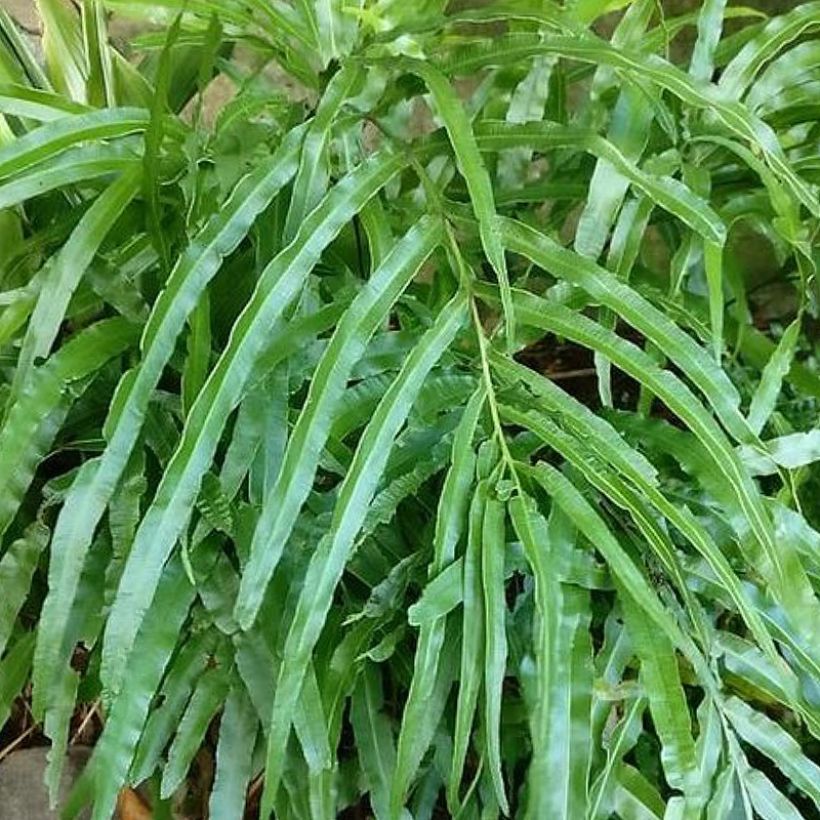

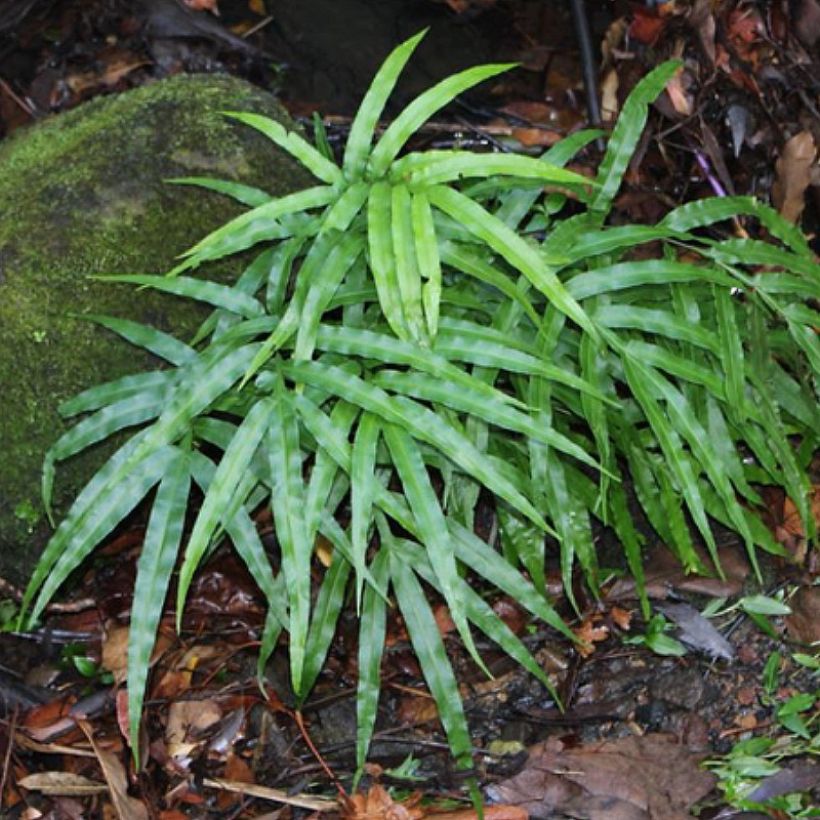

Foliage
Plant habit
Botanical data
Pteris
umbrosa
Pteridaceae
Jungle Brake
Australia
Other Evergreen Ferns
View all →Planting and care
The Pteris umbrosa are tender plants, semi-hardy, mostly grown indoors, in a conservatory or in a very lightly heated bright room. This fern perishes below -6 °C. It can only be grown in the ground in the mildest regions. Elsewhere, it will spend the summer season on a shaded terrace or balcony and will be stored indoors during winter in a frost-free, bright location without direct sunlight. Plant it in good quality potting soil mixed with a little sand. The growing substrate, non-calcareous (pH <6), should always remain slightly moist, but not waterlogged. Do not leave a saucer under the pot, as excess moisture can cause the rootstock to rot. Regularly apply fertiliser for green plants between March and September. Also, spray the foliage with rainwater whenever necessary during the warm season, as well as in winter.
To repot your fern, wait until the pot is filled with roots and preferably do it in spring. You can also divide the clump at the same time so that each division has a nice piece of rootstock and several fronds.
Planting period
Intended location
Care
Planting & care advice
This item has not been reviewed yet - be the first to leave a review about it.
Similar products
Haven't found what you were looking for?
Hardiness is the lowest winter temperature a plant can endure without suffering serious damage or even dying. However, hardiness is affected by location (a sheltered area, such as a patio), protection (winter cover) and soil type (hardiness is improved by well-drained soil).

Photo Sharing Terms & Conditions
In order to encourage gardeners to interact and share their experiences, Promesse de fleurs offers various media enabling content to be uploaded onto its Site - in particular via the ‘Photo sharing’ module.
The User agrees to refrain from:
- Posting any content that is illegal, prejudicial, insulting, racist, inciteful to hatred, revisionist, contrary to public decency, that infringes on privacy or on the privacy rights of third parties, in particular the publicity rights of persons and goods, intellectual property rights, or the right to privacy.
- Submitting content on behalf of a third party;
- Impersonate the identity of a third party and/or publish any personal information about a third party;
In general, the User undertakes to refrain from any unethical behaviour.
All Content (in particular text, comments, files, images, photos, videos, creative works, etc.), which may be subject to property or intellectual property rights, image or other private rights, shall remain the property of the User, subject to the limited rights granted by the terms of the licence granted by Promesse de fleurs as stated below. Users are at liberty to publish or not to publish such Content on the Site, notably via the ‘Photo Sharing’ facility, and accept that this Content shall be made public and freely accessible, notably on the Internet.
Users further acknowledge, undertake to have ,and guarantee that they hold all necessary rights and permissions to publish such material on the Site, in particular with regard to the legislation in force pertaining to any privacy, property, intellectual property, image, or contractual rights, or rights of any other nature. By publishing such Content on the Site, Users acknowledge accepting full liability as publishers of the Content within the meaning of the law, and grant Promesse de fleurs, free of charge, an inclusive, worldwide licence for the said Content for the entire duration of its publication, including all reproduction, representation, up/downloading, displaying, performing, transmission, and storage rights.
Users also grant permission for their name to be linked to the Content and accept that this link may not always be made available.
By engaging in posting material, Users consent to their Content becoming automatically accessible on the Internet, in particular on other sites and/or blogs and/or web pages of the Promesse de fleurs site, including in particular social pages and the Promesse de fleurs catalogue.
Users may secure the removal of entrusted content free of charge by issuing a simple request via our contact form.
The flowering period indicated on our website applies to countries and regions located in USDA zone 8 (France, the United Kingdom, Ireland, the Netherlands, etc.)
It will vary according to where you live:
- In zones 9 to 10 (Italy, Spain, Greece, etc.), flowering will occur about 2 to 4 weeks earlier.
- In zones 6 to 7 (Germany, Poland, Slovenia, and lower mountainous regions), flowering will be delayed by 2 to 3 weeks.
- In zone 5 (Central Europe, Scandinavia), blooming will be delayed by 3 to 5 weeks.
In temperate climates, pruning of spring-flowering shrubs (forsythia, spireas, etc.) should be done just after flowering.
Pruning of summer-flowering shrubs (Indian Lilac, Perovskia, etc.) can be done in winter or spring.
In cold regions as well as with frost-sensitive plants, avoid pruning too early when severe frosts may still occur.
The planting period indicated on our website applies to countries and regions located in USDA zone 8 (France, United Kingdom, Ireland, Netherlands).
It will vary according to where you live:
- In Mediterranean zones (Marseille, Madrid, Milan, etc.), autumn and winter are the best planting periods.
- In continental zones (Strasbourg, Munich, Vienna, etc.), delay planting by 2 to 3 weeks in spring and bring it forward by 2 to 4 weeks in autumn.
- In mountainous regions (the Alps, Pyrenees, Carpathians, etc.), it is best to plant in late spring (May-June) or late summer (August-September).
The harvesting period indicated on our website applies to countries and regions in USDA zone 8 (France, England, Ireland, the Netherlands).
In colder areas (Scandinavia, Poland, Austria...) fruit and vegetable harvests are likely to be delayed by 3-4 weeks.
In warmer areas (Italy, Spain, Greece, etc.), harvesting will probably take place earlier, depending on weather conditions.
The sowing periods indicated on our website apply to countries and regions within USDA Zone 8 (France, UK, Ireland, Netherlands).
In colder areas (Scandinavia, Poland, Austria...), delay any outdoor sowing by 3-4 weeks, or sow under glass.
In warmer climes (Italy, Spain, Greece, etc.), bring outdoor sowing forward by a few weeks.































